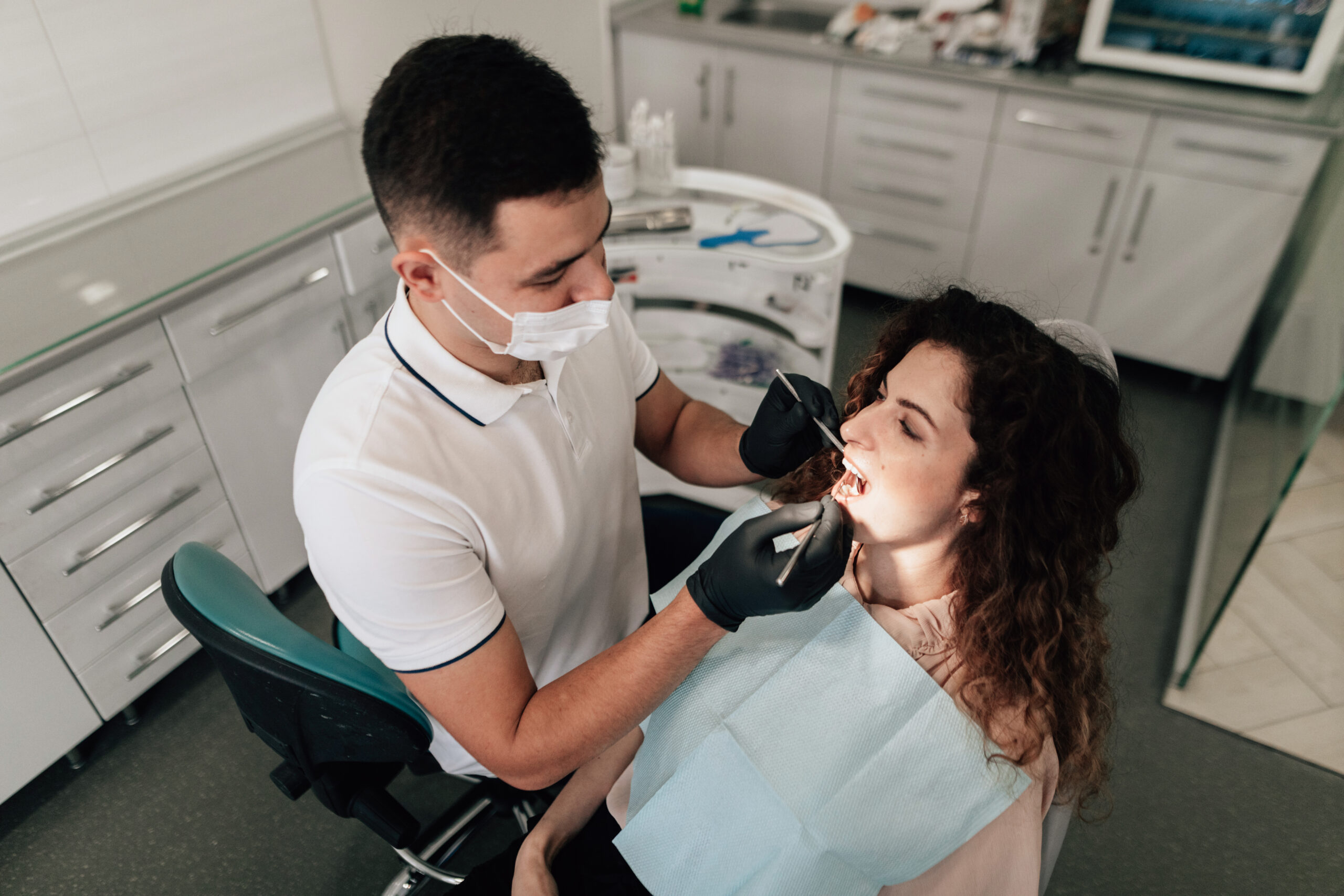Subtotal $0.00
Gum disease, often overlooked in its early stages, is a common yet serious oral health issue. Also known as periodontal disease, it affects the tissues around the teeth, leading to discomfort, tooth damage, and even tooth loss if untreated. Understanding gum disease is crucial—not only because it impacts oral health, but because it can also influence overall well-being. Let’s explore the symptoms, causes, and treatment options for gum disease, empowering you to protect your smile.
What is Gum Disease?
Gum disease is an infection that occurs when plaque, a sticky film of bacteria, builds up on the teeth and along the gum line. In its early form, called gingivitis, it primarily causes gum irritation. Without treatment, gingivitis can progress to periodontitis, a more serious stage where the gums pull away from the teeth, forming pockets that trap bacteria and further weaken the supporting bone structure. Periodontitis can ultimately lead to tooth loss, so early detection and management are essential.
Symptoms of Gum Disease
Spotting the symptoms of gum disease early can make a significant difference. Here’s what to look out for:
Swollen or Red Gums: One of the first indicators, inflamed gums signal the presence of bacteria irritating the gum tissue.
Bleeding: If your gums bleed easily during brushing or flossing, it’s often a sign of gingivitis.
Persistent Bad Breath: Chronic bad breath or a bad taste in the mouth can indicate bacterial growth below the gum line.
Gum Recession: Over time, gum disease can cause the gums to pull away from the teeth, exposing more of the tooth and creating gaps where bacteria thrive.
Loose Teeth or Painful Chewing: Advanced gum disease weakens the structures supporting your teeth, making them feel loose or painful while eating.
Causes of Gum Disease
Gum disease arises due to a mix of lifestyle habits, genetic factors, and overall health conditions that influence oral health. Here are some of the primary causes:
Poor Oral Hygiene: Inadequate brushing and flossing allow plaque—a sticky, bacteria-laden film—to accumulate on the teeth and gums. Left untreated, plaque hardens into tartar, which only professional cleaning can remove, creating an ideal environment for bacterial growth.
Smoking and Tobacco Use: Smoking weakens the immune system and makes it harder for gums to heal. It is one of the biggest risk factors for gum disease, as it significantly lowers the body’s ability to fight off infections.
Genetic Predisposition: Research shows that some individuals may be more susceptible to gum disease due to genetic factors. Even with good oral hygiene practices, they may experience more inflammation or a higher chance of developing gum issues.
Hormonal Changes: Hormonal fluctuations, such as those occurring during pregnancy, puberty, menopause, and menstrual cycles, can increase gum sensitivity and make gums more vulnerable to inflammation and infection.
Diabetes and Other Health Conditions: Diabetes and immune-related conditions increase the risk of gum disease. High blood sugar levels can affect the mouth’s tissue health and lead to infections, including gum disease.
Certain Medications: Some medications, such as those that reduce saliva flow, can contribute to gum disease. Dry mouth from these medications creates an environment where bacteria thrive, increasing the risk of gum issues.
Poor Nutrition: A diet low in essential nutrients, particularly vitamins C and D, weakens the immune system, making it harder for the body to combat infections, including those affecting the gums.
Treatments for Gum Disease
Treating gum disease depends on its severity. Here are some common treatment options:
1. Routine Professional Cleanings
Regular cleanings remove plaque and tartar build-up and are essential for preventing gum disease. For gingivitis, a cleaning may be all that’s needed to reverse the condition.
2. Scaling and Root Planing
This is a deep cleaning method that removes plaque and tartar from beneath the gums and smooths the tooth roots. It’s an effective treatment for early to moderate periodontitis.
3. Medications
Antibiotics or antiseptic mouthwashes can be prescribed to control infection. They may be used alongside other treatments to reduce bacterial load and inflammation.
4. Surgery
For severe gum disease, surgery may be needed. Options include flap surgery to clean under the gums or grafting procedures to restore gum and bone tissue.
5. Laser Therapy
Laser treatment targets infected gum tissue and bacteria without affecting healthy tissue. It’s a less invasive option for treating advanced gum disease.
Preventing Gum Disease: Daily Habits Matter
Preventing gum disease begins with daily habits and a commitment to oral hygiene. Here’s what you can do:
Brush Twice Daily: Use a soft-bristle toothbrush and fluoride toothpaste to brush your teeth and gums thoroughly.
Floss Regularly: Daily flossing helps remove plaque from areas that a toothbrush can’t reach.
Use Antiseptic Mouthwash: This reduces bacteria in the mouth, helping to protect your gums.
Avoid Smoking: Tobacco use is a major risk factor for gum disease and slows the healing process.
Follow a Healthy Diet: A balanced diet supports immune health, making it easier for your body to fight infections.
Visit Your Dentist Regularly: Professional cleanings and check-ups allow for early detection and management of gum disease.
Conclusion
Gum disease can have serious implications for both oral and overall health, but it’s largely preventable with the right approach. Regular dental check-ups, a good oral hygiene routine, and lifestyle choices that support gum health are your best defence. At GD Hospital, we’re here to guide you in maintaining your oral health and managing any issues with care and expertise.
If you have concerns about gum disease or notice any symptoms, don’t wait—schedule a check-up with GD Hospital. We’re committed to helping you achieve optimal oral health and a brighter smile.



